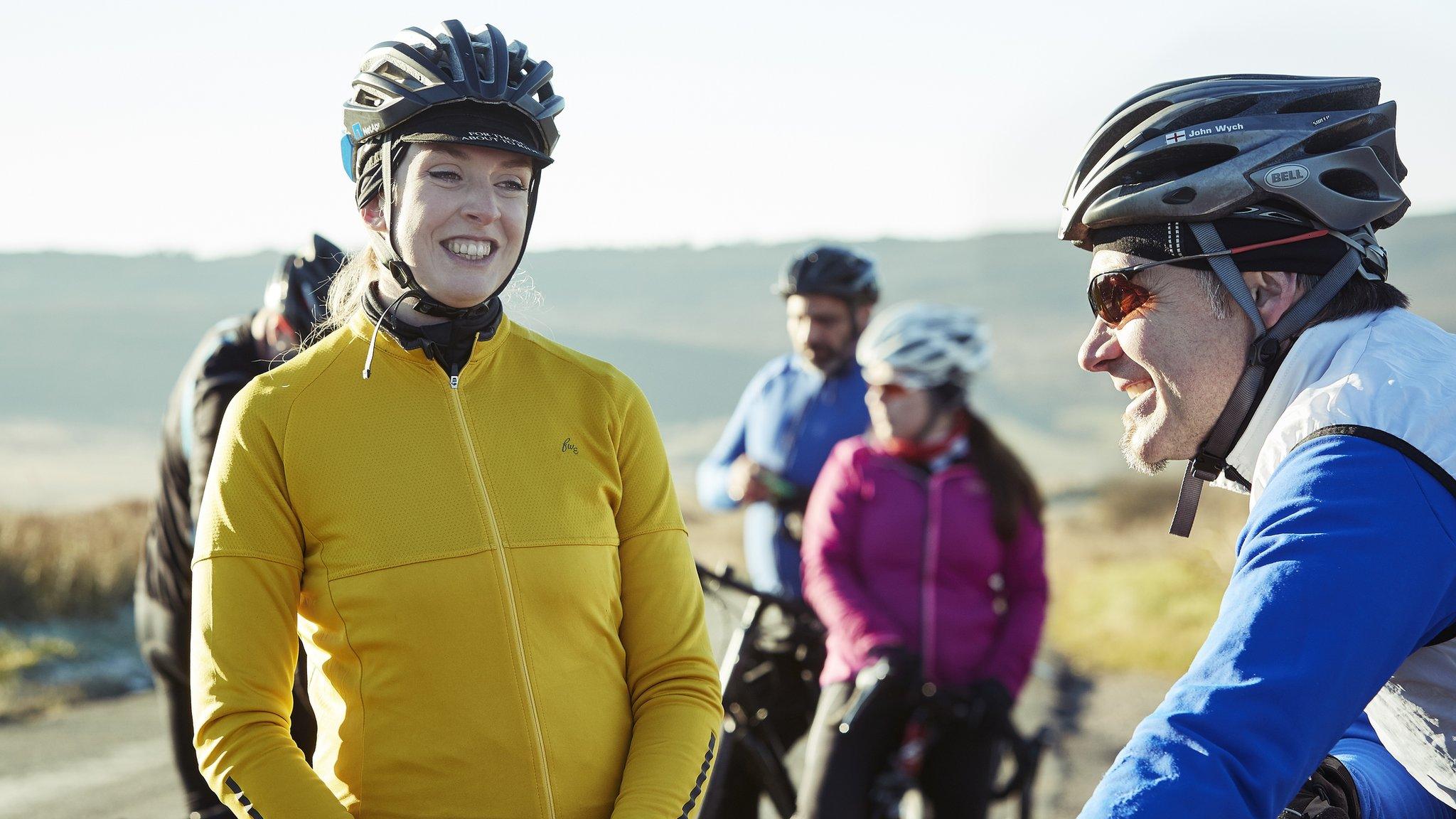What is stopping women from cycling?
- Published
Watch one woman's cycle commute to work
The bicycle was once a symbol of women's emancipation, with suffragettes taking to two wheels to spread their message of equal rights. But the latest figures show a big gender divide when it comes to cycling. Why?
About 50% fewer women than men cycle twice a week or more, according to walking and cycling charity Sustrans, external, and when it comes to cycling on the roads, the number drops again.
Commonly cited reasons for shunning the benefits of getting into the saddle include sexual harassment, fears about appearance and concerns about safety. So what can be done to get more women on their bikes and out on the road?
Tackling sexist attitudes among male road users would be a first step, says Leigh Campbell, who leads all-women cycling rides in Nottingham.
"Sometimes, when I've been out cycling on my own, I've had male drivers shout at me as they're overtaking," said the 45-year-old British Cycling Breeze Champion., external
"I've been told to 'read the Highway Code' and 'get off the road'. I've also been sworn at.
"I've even had 'keep pedalling, nearly there' - from a male cyclist. They wouldn't have said it to another man, it's so patronising and uncalled for.
"All I want to do is ride my bike and I don't think I should have to put up with abuse from other - mainly male - road users, just because I'm a woman."
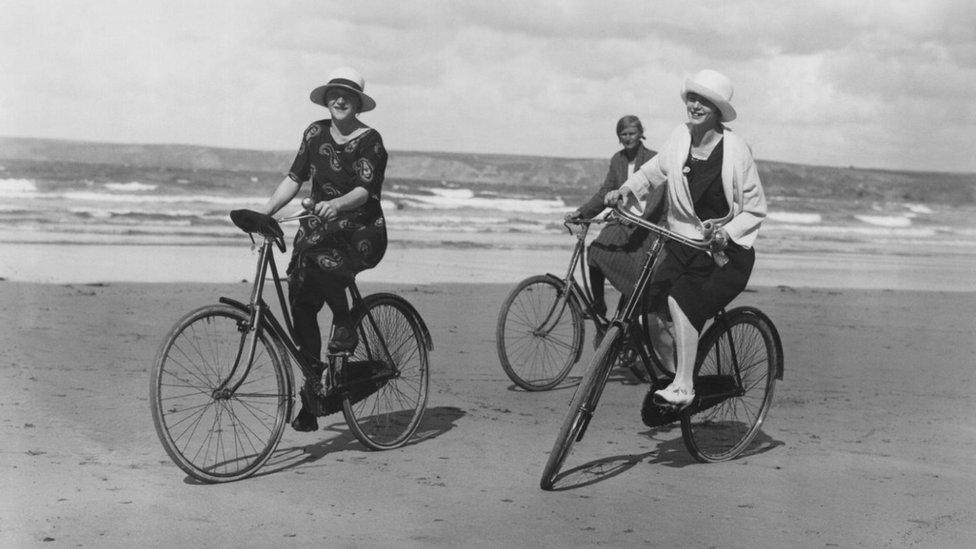
A century ago, pedal power gave women the opportunity to be more independent
What some men may see as harmless fun can be unnerving, frightening and confidence-draining.
Helen Pidd, a journalist who has written a book aimed at women cyclists and rides with an all-female club called Team Glow, has had her fair share of comments.
"We get a lot - some of it's general, anti-cyclist stuff but sometimes it's really mean. Stuff like 'thunder thighs'. Cycling gear is not kind to people's sizes - I'm a size 10 and sometimes I have to wear a large in tops.
"I was riding through the Peak District in Derbyshire one time and a motorbiker slapped me on the bum. It was frightening and dangerous. I reported it to Derbyshire Police who said I'd been sexually assaulted."

Safety is one of the main concerns when it comes to women cycling on the roads
Another primary concern for many female cyclists is safety, according to a report on cycling by Sustrans in 2013, external.
"Women tend to be more concerned about safety than men," said Ms Pidd.
"And those fears are perfectly rational. Roads aren't safe for cyclists - you need to be confident to go on the roads."
Throw sexual harassment into the mix and is it any wonder many women are reluctant to get on their bikes?
For some though, overcoming their inhibitions can be life-changing.
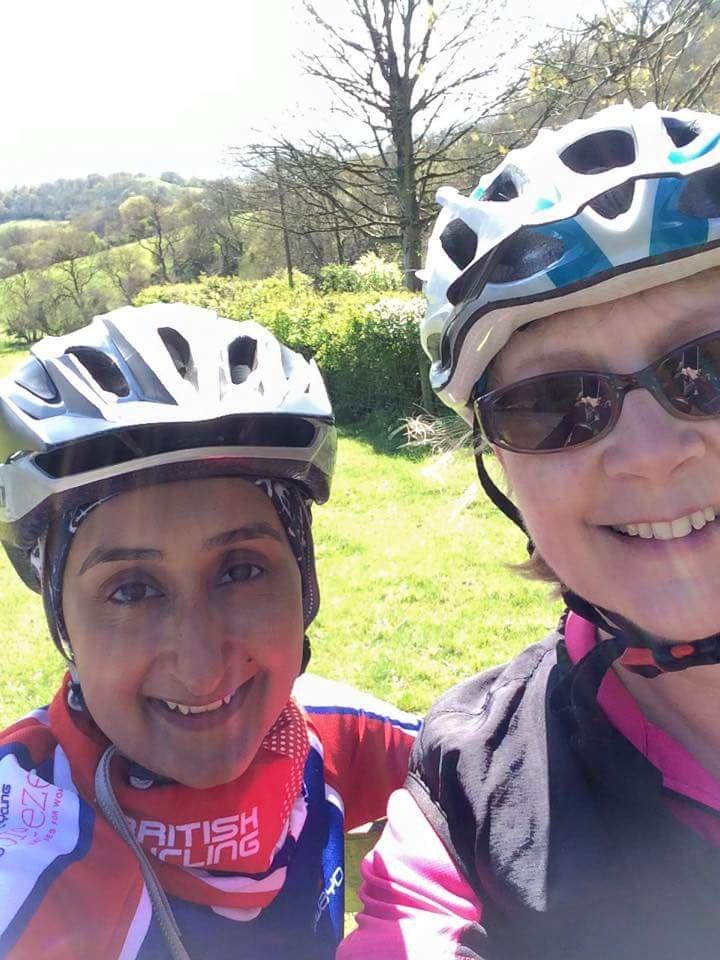
Maryam Amatullah and Lindsey Ball have become best friends through cycling
Maryam Amatullah, a 46-year-old from Leicester, had a passion for cycling as a child but quit in her teens.
Then in 2010, while recovering from chronic fatigue, she realised she wanted to get back on the road again.
"My youngest was playing on the PlayStation and I thought 'I want to get out in the fresh air', so I went out and bought myself a bike," she said.
"I got a lot of stares at first in my hijab, particularly from my community and I didn't like it.
"I got tearful and felt self-conscious but I contacted the council to see if there were any clubs I could join. They told me the only thing to do was to set something up myself or train as an instructor.
"So that's what I did and started volunteering for cycle organisations and delivered training in schools. In 2011 I trained as a Breeze Champion and now my life has changed forever."
Breeze Champions are volunteers who lead women-only rides as part of British Cycling's goal of getting one million more women cycling regularly by 2020.

Zero to 1,500 miles in a year - Anna Allatt, former non-cyclist
Watch: Women-only Breeze ride outing
I have been a cycling widow for several years but in the new year of 2017, I decided I wanted to cycle the 20-mile round trip from home to work a couple of times a week.
As a full-time working mother-of-two, it was almost impossible to factor in exercise but this way I'd be able to make it part of my daily routine.
I would also have to overcome the fear of the work shower room (singular). And figure out how to dry my hair and do my make-up to make myself presentable for work - all in the confines of one slightly grotty space.
My husband suggested signing up to a Breeze ride and I haven't looked back.
Weather permitting, I commute a couple of times a week. I have also joined a club, completed my first sportive, external and racked up a total of 1,541 miles on my bike in 2017.
I feel better physically and mentally and have made some really good friends. And this year's goals? To get a road bike and complete a 100-mile ride.

Mrs Amatullah's fellow coach, Lindsey Ball, 54, says she feels equally strongly.
"Mentally, I know when I've not been cycling. If you've got a family, a job, you can get bogged down, you get so busy but on the bike you have some 'me' time, you're taking control and you get to exercise," she said.
"The friends I've met through cycling are my best friends now. When we do our cycling holidays, we're tired and exhausted; you don't want to see another hill but we all encourage each other and it really builds your self-esteem."
Offering women a "safe and comfortable" environment such as a female-only group can encourage them to take up cycling, according to Kate Dale, head of Sport England's This Girl Can, external (TGC) campaign, which aims to get women active and involved in sport.
"Groups of men aren't necessarily intimidating but can be cliquey and if you think they all know what they're doing it can be off-putting," she said. "They may not be doing it on purpose but it may be an environment you're not comfortable in."
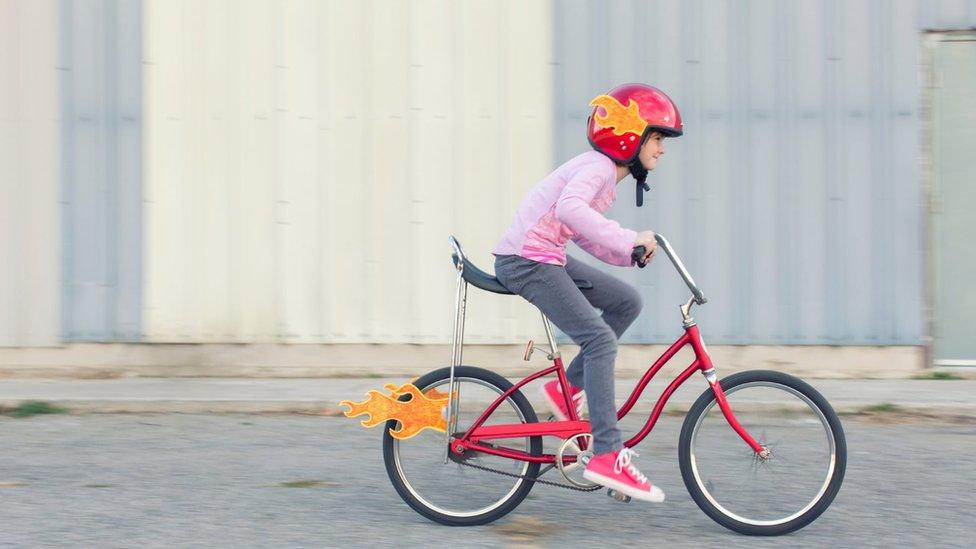
"When you're young, you don't think about how you look," says Kate Dale, head of the This Girl Can Campaign
TGC research also found appearance was an important issue for women while there were worries among some about ability.
"Women who've had bad experiences of sport at school or feel they're "too fat to get fit", or aren't sure how to change a tyre or work out their gears on a bike, can feel intimidated," Ms Dale said.
"And then there are priorities. We feel guilty if we do exercise, for taking some 'me' time, and guilty if we don't as we're not setting a good example. It's all too much to overcome, or can certainly seem that way."
As 2018 begins, the year that marks the centenary of women being given the vote in the UK, the words of Susan B Anthony, the US suffragist and abolitionist, seem fitting.
"I'll tell you what I think of bicycling. I think it has done more to emancipate women than any one thing in the world.
"I rejoice every time I see a woman ride by on a bike. It gives her a feeling of self-reliance and independence the moment she takes her seat; and away she goes, the picture of untrammelled womanhood."
She may have made that comment in 1896 but Maryam Amatullah feels much the same way more than 120 years later.
"I grew up shy and I lacked self-esteem but when I'm on the bike, I feel like a superhero.
"I feel as if I'm in control."

The changing face of cycling - advice for the female rider of 1895
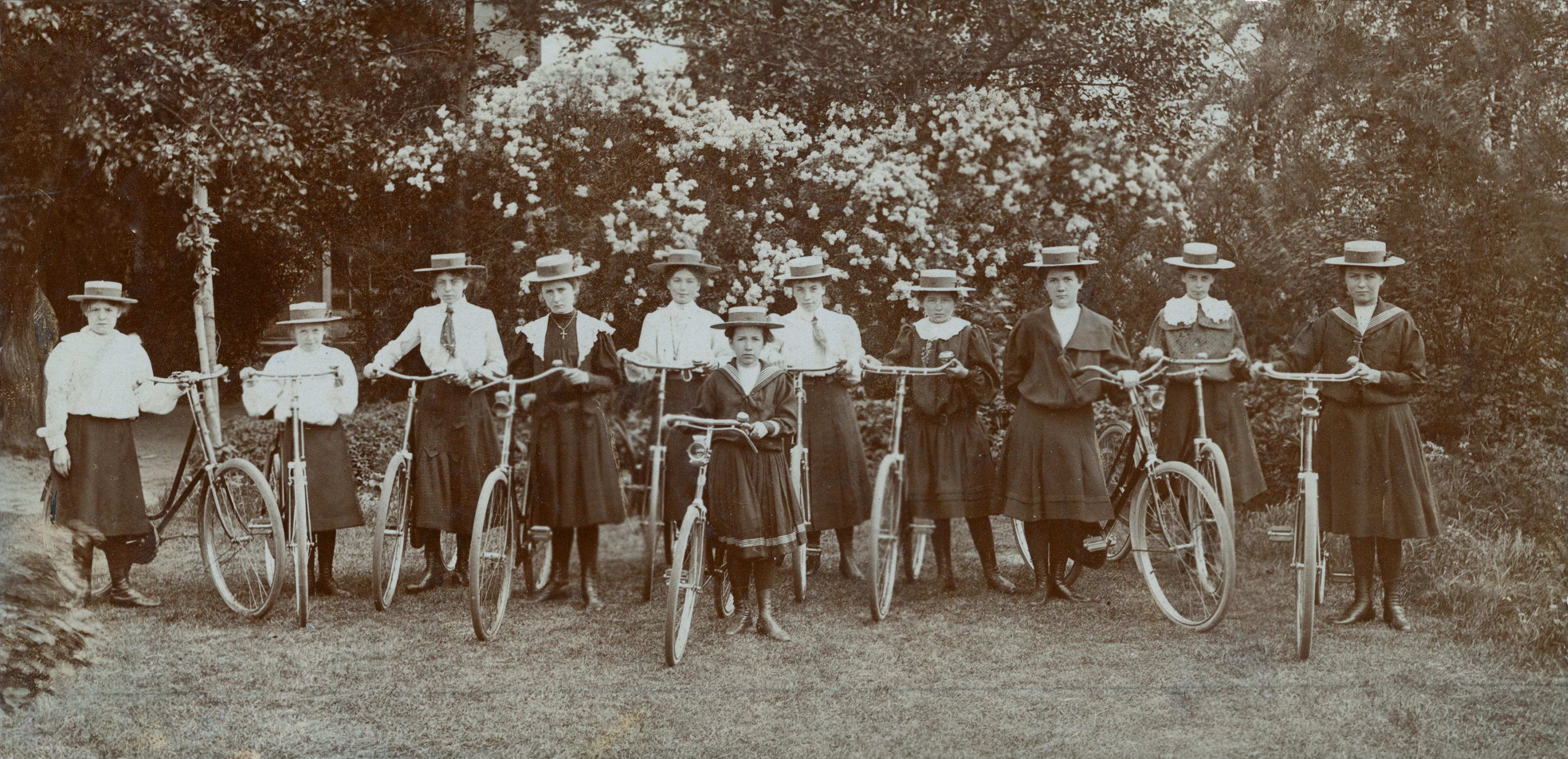
Don't boast of your long rides
Don't cultivate a "bicycle face"
Don't refuse assistance up a hill
Don't use bicycle slang. Leave that to the boys
Don't go out after dark without a male escort
Don't scratch a match on the seat of your bloomers
Don't appear in public until you have learned to ride well
Don't appear to be up on "records" and "record smashing." That is sporty
Source: New York World 1895

- Attribution
- Published26 July 2017
